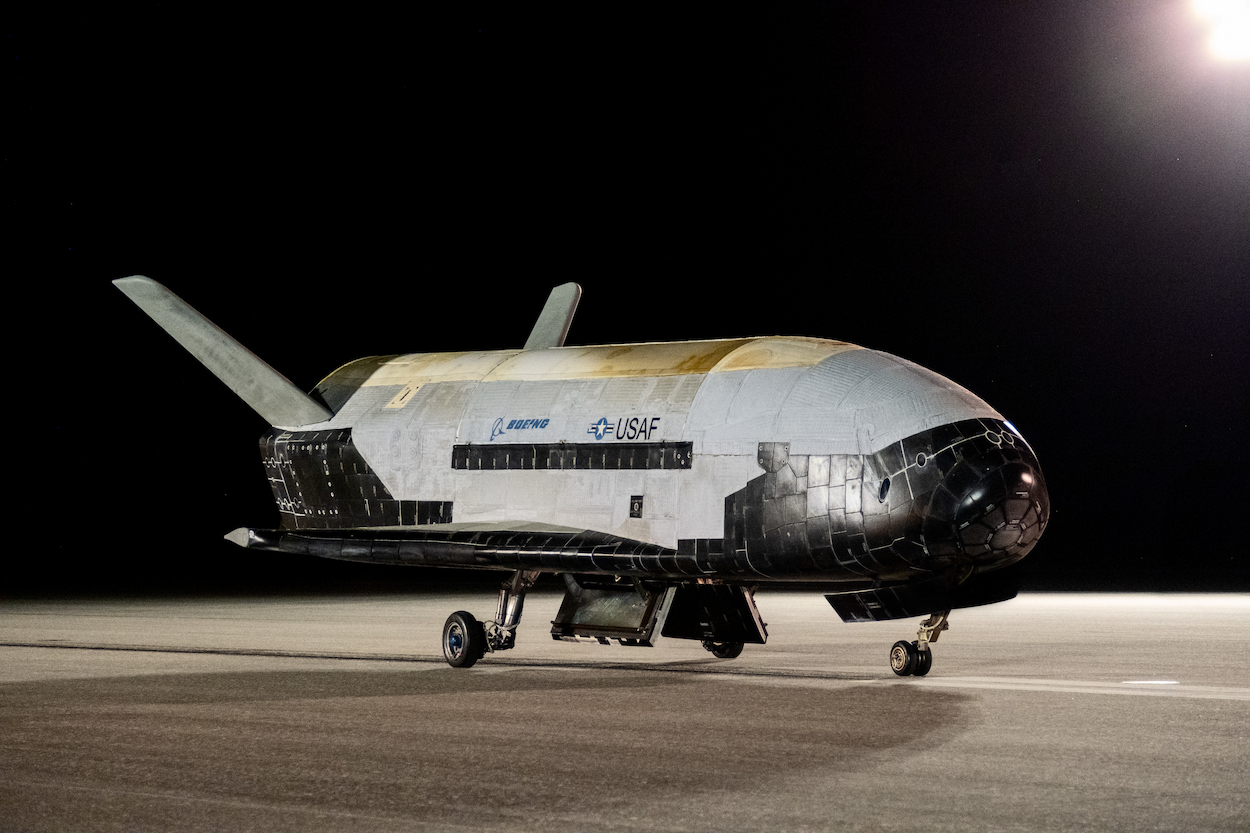
It seems to be a news story that takes place every couple of years, but early Saturday morning, sonic booms were heard across Florida Space Coast. Those rather iconic booms could only mean one thing, the arrival of NASA’s Space Shuttle or the Space Force’s classified X37-B spaceplane. Since all of NASA’s shuttles have been collecting dust in museums for the past decade, it must be that pesky X37-B.
Launched in May 2020, the X37 is an uncrewed spaceplane that can be launched on Atlas V and Falcon 9 rockets for long-duration tests in space. This was the X37’s sixth mission (OTV-6 or USSF-6) and its longest by far. In total, it spent 908 days in orbit, passing its previous flight record by 128 days.
The purpose of the X37-B, which was built and is maintained by Boeing, is to do long tests in space and expose hardware to the elements. The ability to open bay doors and deploy payloads, let them sit outside the vehicle and be exposed to space directly, and then return them for evaluation is beneficial.
OTV-6 was a mission of firsts for X37-B
This was the X37-B’s first mission for the then-newly created US Space Force. However, you will still find US Air Force insignia on the spaceplane. That must have been too much to change in less than a year, and that might stay as it is still considered an asset of the Air Force while the Space Force handles launch, on-orbit operations, and landing (so I guess the Air Force just pays for it?).
Another first was the number of payloads on this mission, surpassing previous flights. OTV-6 included two for NASA, one for the Naval Research Laboratory, FalconSat-8 from the US Air Force Academy, and most likely others that weren’t disclosed. We actually knew the most about what this mission was up to in orbit than any flight.
Finally, this X37-B featured a service module on its rear for the first time. This was used to hold experiments later deployed from the spacecraft throughout its mission. The service module is separated from the rest of the plane before reentry. Otherwise, the X37-B is a fully reusable vehicle.
China’s copycat X37-B
Similar to the Soviet Union building its own Space Shuttle in the 80s, China made its own clone of the X37-B to do its secret tests in orbit. We don’t know much about it, but it flew 90 days earlier this year and even deployed some satellites.
We most likely won’t know anything more about this vehicle; we don’t even have a photo since all of China’s space programs are classified.
We don’t know when the X37-B’s next flight will take place, nothing is currently on the schedule. But we’ll know for sure that it will still be secretive to keep what the Air and Space Forces are doing up there in space under wrap.
FTC: We use income earning auto affiliate links. More.




Comments